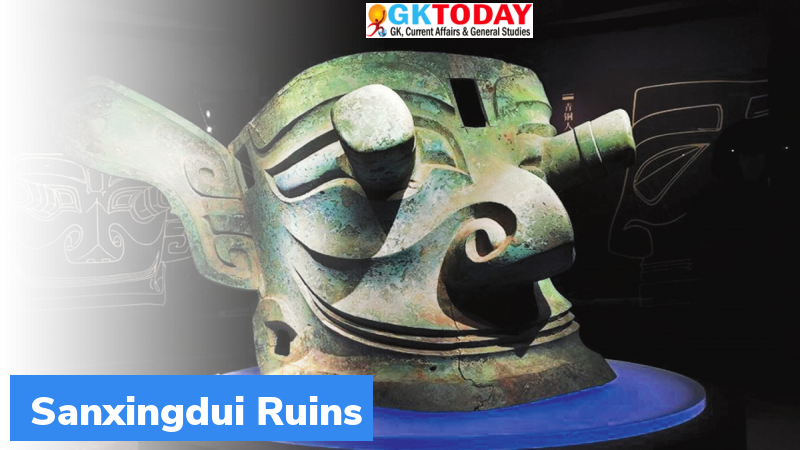Sacrificial pits found in Chinese city of Sanxingdui
A sacrificial pit was recently discovered at Sanxingdui Ruins Site in China, highlighting the greatness of Chinese civilization.
Highlights
According to National Cultural Heritage Administration, Chinese archaeologists found six new sacrificial pits and about 500 items dating back to 3,000 years at Sanxingdui Ruins in Sichuan Province. Archaeologists have found gold masks, gold foil, miniature ivory sculptures, bronze trees, bronze masks, carbonized rice and seeds in four of the six pits.
Where are Sanxingdui ruins located?
Sanxingdui ruins are located in Guanghan city which is about 60 km from provincial capital of Sichuan, Chengdu. These ruins belonged to Shu Kingdom existed some 4,800 years ago and lasted at least 2000 years ago.
About Sanxingdui
It is an archaeological site and a major Bronze Age culture of China. It was discovered in 1986 after preliminary finding in 1927. Remarkable artifacts were excavated by archaeologists which radiocarbon dating placed in 12th–11th centuries BC. These artifacts are similar to artifacts of ancient kingdom of Shu and are currently displayed in Sanxingdui Museum located near Guanghan.
Significance of the excavation
Excavation at Sanxingdui including the discoveries like Xingan tombs in Jiangxi, challenges traditional narrative of spread of Chinese civilization from central plain of Yellow River.
Month: Current Affairs - May, 2021








